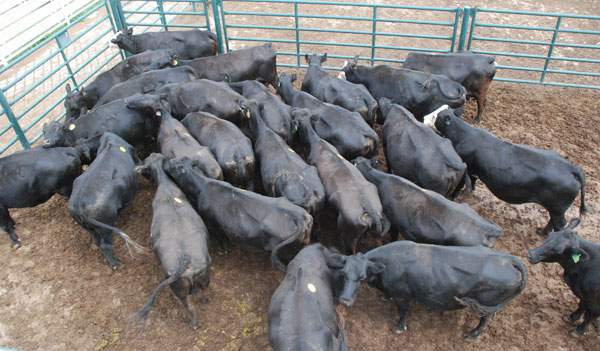“Cow prices have continued steady to higher, with anticipated seasonal decreases in cow slaughter,” say analysts with USDA’s Economic Research Service in the monthly Livestock, Dairy and Poultry Outlook.
April 17, 2015

“Cow prices in the second half of 2015 will likely come under seasonal pressure and could average below last year’s record levels,” says Tim Petry, North Dakota State University livestock economist, in this week’s In the Cattle Markets.
For perspective, Petry explains slaughter cow prices (85-90% lean, Southern Plains) peaked last August at $131 per cwt. They averaged about $115 in the fourth quarter and have remained above the prior year at $103-$115.
“Cow prices have continued steady to higher, with anticipated seasonal decreases in cow slaughter,” say analysts with USDA’s Economic Research Service in the monthly Livestock, Dairy and Poultry Outlook. “The prices have held despite increasing boneless cold storage stocks from increased supplies of imported processing beef and hold-over stocks from earlier West Coast shipping issues.”

70+ photos showcasing all types of cattle nutrition
Readers share their favorite photos of cattle grazing or steers bellied up to the feedbunk. See reader favorite nutrition photos here.
There was 5% less total cow slaughter during the first quarter of this year, compared with the previous year, which is price supportive. But, Petry explains, “A number of fundamental factors combined are keeping cow prices in check.”
For one thing, Petry explains beef imports are higher due to historically high U.S. prices, forced cow liquidation in Australia due to drought and the strong value of the U.S. dollar. Through February this year, he says beef imports were 56% higher year-over-year; imports from Australia were 120% higher.
There’s increasing price pressure from competing meats, too.
“While total beef production was down about 3.5% in the first quarter of 2015, pork production was up over 6%, broiler production was up 5%, and total red meat and poultry production was up over 3%,” Petry says. “For the entire year, USDA is projecting an increase in pork production of 6.1%, broiler production up 3.8%, and a 3.4% increase in total meat production.”
Petry also notes that cow byproduct values are currently more than $2 per cwt less than last year’s record-high levels, due in part to congestion in Pacific Coast ports.
“Increased production of competing meats, more lean beef imports, and lower byproduct values are all impacting cow prices,” Petry emphasizes. “Cow slaughter the second half will be closer to last year and, of course, depends on weather-related pasture and range conditions. Extreme drought is still prevalent in the Southwest. Parts of the Southern Plains also remain dry, and dry conditions have developed in parts of the Northern Plains. And, the previously mentioned increases in competing meat production and beef imports will be factors to watch as well.”
You might also enjoy:
7 U.S. cattle operations honored for stewardship efforts
9 new hay-making tools for the 2015 forage season
Want your first-calf heifers to breed-back? Start with nutrition
About the Author(s)
You May Also Like





